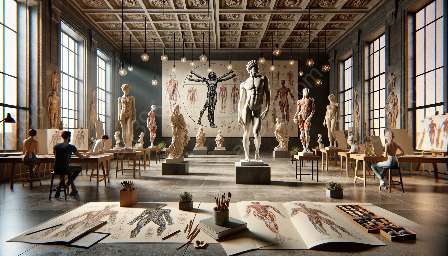Creating a realistic portrait painting involves not only capturing the subject's likeness but also conveying their personality and emotions. To achieve this, artists need a deep understanding of facial anatomy. By delving into the intricacies of muscles, bones, and structure, artists can breathe life into their portraits, making them appear vivid and captivating.
The Importance of Facial Anatomy
Facial anatomy forms the foundation for any realistic portrait painting. It provides insight into the underlying structure of the face, including the placement and movement of muscles, the contours of bone structure, and the variations in skin tone and texture. Through a thorough grasp of facial anatomy, artists can accurately depict the nuances of expression, such as a subtle smile or furrowed brows, thereby infusing their paintings with depth and emotion.
Moreover, understanding facial anatomy enables artists to overcome the challenges of foreshortening, varying perspectives, and different lighting conditions. By mastering the three-dimensional aspects of the face, artists can depict their subjects convincingly, regardless of their position or the surrounding light sources.
Connection to Artistic Anatomy
Facial anatomy is intricately linked to artistic anatomy, as it encompasses the study of the human body's structure and form. While artistic anatomy covers the entire body, focusing specifically on the face provides artists with a deeper understanding of expression and identity. By honing their skills in facial anatomy, artists can bring a heightened level of realism to their portrait paintings, with each feature and expression reflecting a profound knowledge of human anatomy.
Visualization and Observation
One of the key benefits of understanding facial anatomy is the ability to visualize and observe the face more accurately. By comprehending the underlying structures, artists can envisage how the facial muscles interact during different expressions, leading to more authentic and lifelike portrayals. This level of detail allows artists to capture a subject's personality and character, as well as the intricacies of aging, ensuring that their portraits stand the test of time.
Detail and Realism
Facial anatomy empowers artists to incorporate intricate details and subtle nuances into their portrait paintings. From the delicate lines around the eyes to the contours of the lips, understanding the underlying anatomy enables artists to depict the face with a heightened level of precision and accuracy. This attention to detail not only enhances the realism of the painting but also showcases the artist's mastery of their craft.
Expression and Emotion
Through a thorough understanding of facial anatomy, artists can accurately capture a wide range of emotions and expressions in their portrait paintings. The ability to depict joy, sadness, or contemplation with authenticity and depth adds a compelling layer of storytelling to the artwork, establishing a profound connection between the viewer and the subject.
Conclusion
Understanding facial anatomy is a transformative experience for artists seeking to create realistic portrait paintings. It elevates their ability to capture the essence of the human face, infusing their artworks with depth, emotion, and authenticity. By exploring the intersection of facial anatomy, artistic anatomy, and the portrayal of emotion, artists can embark on a journey towards creating compelling and lifelike portrait paintings.

